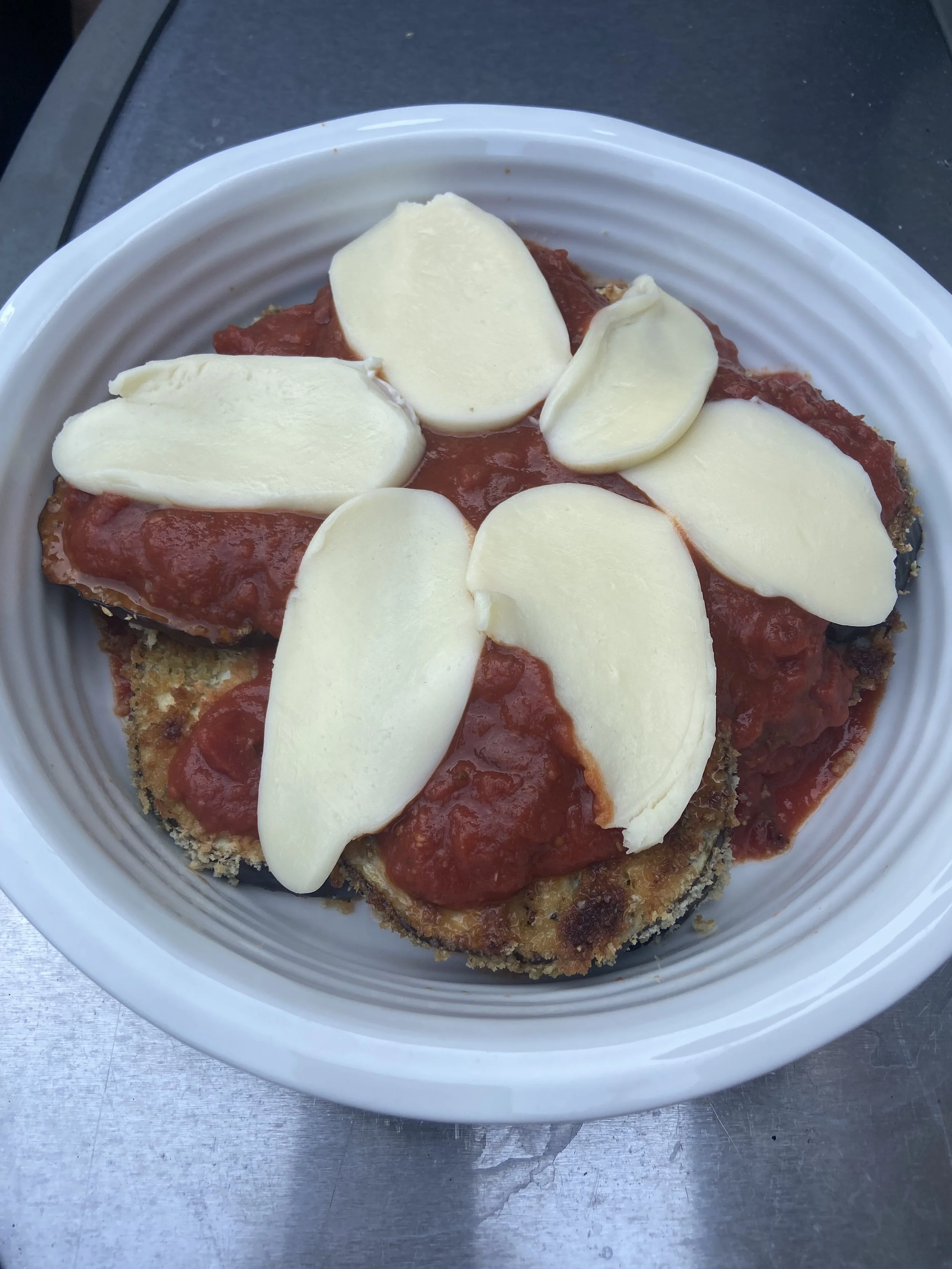Growing plants you can eat, in your own garden, can be so rewarding. I particularly like doing this with kids. They can help pick out the plants, help plant them, water them and care for them and see them grow into something edible right before their eyes. This year, in addition to our usual herb garden, we picked eggplant, tomato, and strawberries to grow.
When it was time to harvest the eggplant, I wanted to make my favourite eggplant dish - the classic eggplant parmesan. I ended up making it on the BBQ because we’ve been in a heatwave, but this can also be prepared in the oven.
Transforming a homegrown plant into a dish the whole family can enjoy can be very rewarding, and may even have more of an impact on getting that less adventurous eating to even take part. Our kids took a whole slice of this dish and ate every last bite! Give this one a try and I hope your family loves it as much as mine.
Eggplant parmesan
Author: Andrea Carpenter, RD
Recipe Type: Entrees
Serving: 4
INGREDIENTS:
1 large eggplants, cut into ¼-inch-thick rounds
1 egg, beaten
1 cup panko
1 teaspoon garlic powder
1 teaspoon dried oregano
1/2 teaspoon salt
1/2 teaspoon ground pepper
olive oil for drizzling, about 1 tablespoon
1 jar marinara sauce
6-8 slices of mozzarella (either from a fresh mozzarella or a mozzarella ball)
DIRECTIONS:
Preheat your oven or BBQ to 400 degrees.
Prepare the eggplant by slicing into 1/4 inch thick rounds, salt on both sides and let sit for about 5-10 minutes. Rinse off then allow to dry for another 5-10 minutes. This step should not be skipped - it helps to draw out moisture and helps to create a more creamy, less bitter and less oily eggplant.
Prepare the dredge. In one bowl, beat the egg and set aside. In another bowl, add the panko, garlic, oregano, salt and pepper and mix. Take each eggplant round and dip into the egg then dip into the panko mixture. Set on a parchment lined cookie sheet. Repeat until all eggplant rounds have been coated.
Drizzle olive oil over the eggplant and place in the oven or on the BBQ at a 400 degree temperature. Cook both sides for approximately 10 minutes per side, until slightly golden brown.
Next, to a casserole dish (I ended up using a pie dish which works well, too!) add about 1/2 cup of the marinara sauce on the bottom then evenly layer all the eggplant (you will likely need to stack the eggplant into two layers).
Top the layered eggplant with the remaining marinara then layer with mozzeralla.
Return the dish to the oven or BBQ at 400 degrees and cook for another 5-10 minutes until the cheese has melted and sauce is bubbling.












